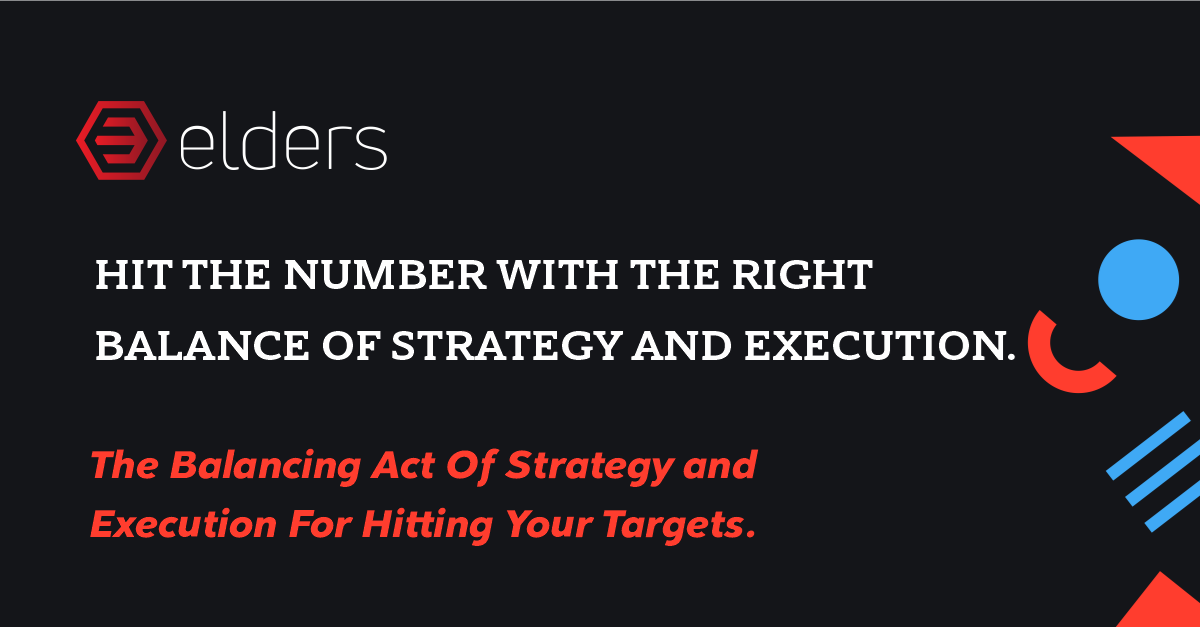The Balancing Act Of Strategy and Execution For Hitting Your Targets
Not balancing up good Execution For Hitting Your Targetsod execution with good strategy could well lose you revenue.
Balancing Up Execution And Strategy.
That top-performing company development executives hit their revenue targets with great predictability is no stroke of luck. Same for us Elders! We do it by deft wielding of strategy and execution in tandem.
So let us give you some tips and tricks.
Strategists not then following through with great execution risk missing their short-term revenue targets. They miss these targets because they don’t carry out their promises. Go-getters, conversely, often miss their long-term goals. These managers execute their campaigns with ill-conceived or imprecise plans. They may lead dynamic teams but do so without a sense of purpose.
All these CEOs, by concentrating too much on just one side of either strategy or execution, jeopardise their revenue predictions, which in turn antagonises their boards and shareholders causing them
to demand explanations for the poor performance from the sales leaders.
So, what, in this balancing act, elevates successful CEOs above the others?
What these CEOs do is to get over just how vital is the clear and distinct separation of strategy and tactics -
strategy = choosing things properly
tactics = doing things properly.
That done, they coordinate their corporate, product, marketing, and sales functions appropriately.
The structures these CEOs use to support this separation are procedures for tracking and updating campaigns with, importantly, people responsible for their implementation. So, you’re focussing on lifting your company’s products / services above the competition. Plan out how to do this with your management team(s) and, together, produce the framework in terms of time, money and resources for its implementation. You then turn over this implementation - campaign tactics - to the relevant departments and, in turn, teams to achieve their specific aims.
Mishandled execution in just three example business processes that can hit your bottom line are product launches, marketing execution and sales execution. In a highly volatile market, getting these three right may just save your skin in the short-term. Likewise, long-term strategy balanced with carefully planned evolution will go far towards ensuring your long-term future.
Evaluating Progress
To evaluate your progress, either as a company long-term or during individual campaigns, the following strategy-tactics matrix indicates how well you can steer results on the basis of your performance at strategy and execution. Each quadrant is described below…
⦁ Survive. A brilliant plan executed poorly allows you to survive but doesn’t enable the plan to show what it’s capable of. Hewlett-Packard, after it acquired Compaq, lost serious ground to Dell by shifting its focus from week to week between parts of its plan.
⦁ Thrive. A brilliant plan executed brilliantly. This is how it should be done. There is a clear company vision shared amongst all personnel. This results in not just ⦁ sales and marketing alignment but also product alignment, in turn resulting in effective campaign execution.
⦁ Die Slowly. A poor plan executed poorly. These companies have strategies which are fundamentally flawed, for example marketing products to businesses with business functions when people will be using the products and require them to be consumer-oriented.
⦁ Die Quickly. A poor plan executed brilliantly. These companies have the experience and know-how to put a campaign into action effectively but the campaigns themselves are fundamentally flawed.
Aligning Strategy And Execution As Well As Clarifying Their Difference
Aligning strategy and execution throughout companies enables CEOs to transfer their companies from one quadrant to a better one.
Having heads of departments clear as to the difference between a strategy and a tactic, able to expand on it if need be, then clear as to where the company lies within this matrix and their own team(s) will enable them to be able to execute this transfer.
Testing these department heads on these points will give you an idea how much progress there is still to be made towards achieving strategy and execution alignment along with clarity of vision and ultimately reaching your targets this year.
Having company-wide clarity regarding the difference between strategy and tactics will enable you to determine the position within this matrix of your company and any one of its departments, teams or business units.
Don't thank us for the useful information-just follow us on LinkedIn for more.
12/1/2021

